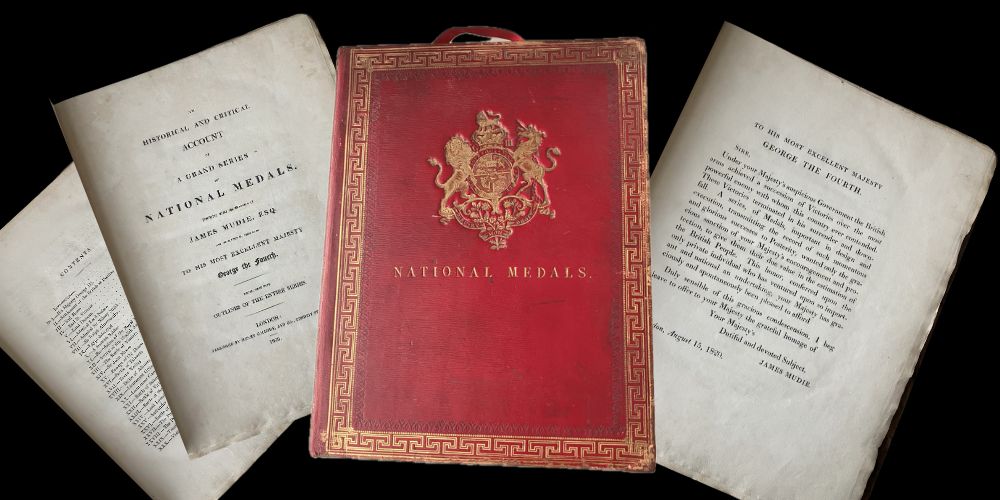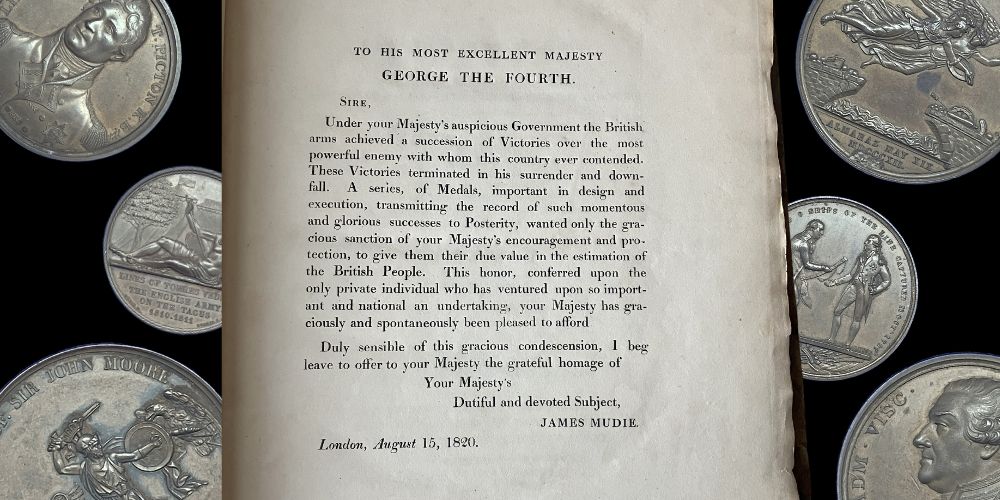
A little over two centuries years ago in 1820, a set of 40 silver and bronze medals were produced by British sculptor and medallist, James Mudie. Manufactured by E. Thomason, they commemorated British victories over the French in battle between 1797 and 1817. Each medal measured 41mm in diameter and depicted scenes from different British military victories achieved during the reign of George III.

James Mudie medals rarely come up for sale, particularly as a full and undamaged set of 40. The collection was originally presented and sold to a list of subscribers in a leather-bound case made to resemble a book. It was a huge financial undertaking by James Mudie and the final cost reached nearly £10,000 to produce the series and the medals themselves were created by leading engravers over several years. Two velvet lined trays held the British war and victory medals inside the case to protect them and present them at their best.
So, what did each British war medal and victory medal depict? A number of British naval victories gained during the Spanish Peninsular War and the Duke of Wellington’s military campaigns against Napoleon’s forces were commemorated. Subjects were wide-ranging and included dedications to George III, portraits of key military figures, victorious battle lines, peace treaties, important military visits and more. Below are just some of the events, victories and people depicted in the collection of 40 James Murdie medals.
Death of Sir John Moore (1809)
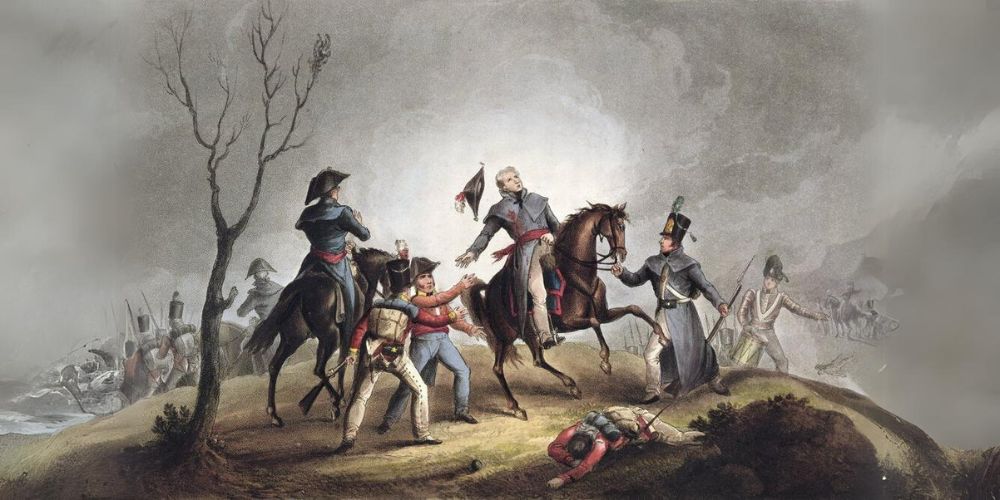
One of the first medals to be struck in this collection depicted the death of Sir John Moore, a senior British army officer who fell at the Battle of Corunna in Spain in 1809. Born in Scotland in 1761, Moore enjoyed a distinguished military career, including many victories during the Spanish Peninsular War. He was best known for his reforms in military training and the development of the famous Light Division.
Line of Torres Vedras (1810/11)

Several of the James Mudie medals portrayed events and notable achievements from the Duke of Wellington’s Spanish Peninsular campaigns in 1810, 1811 and 1812. A copper medal commemorated Wellington’s defence of the Line of Torres Vedras in the 1810/1811 winter of 1810 and 1811. Built secretly to shore up the defence of Lisbon against French and Spanish forces, they were commissioned by Wellington and constructed by Colonel Richard Fletcher and a team of Portuguese workers.
Sir Thomas Picton and the Battle of Badajoz (1812)
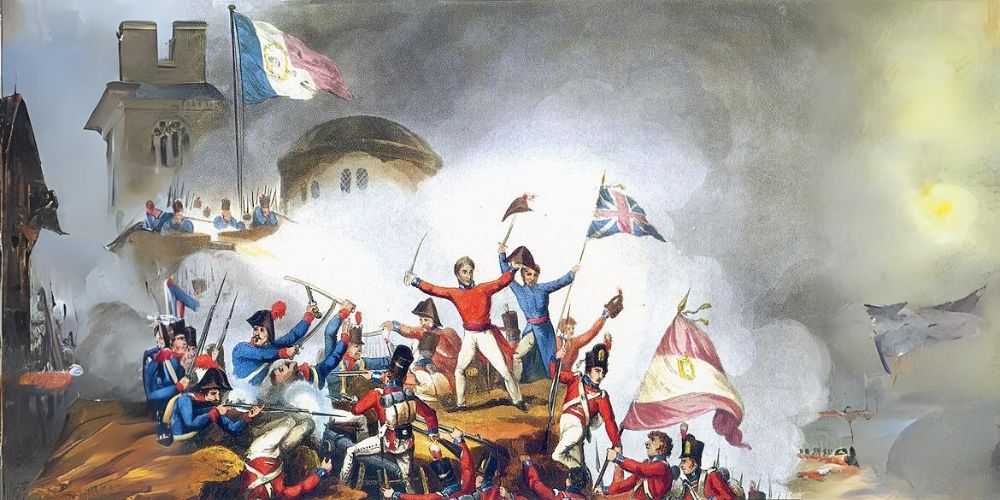
Another example of James Mudie medals inspired by Wellington’s campaigns was struck in 1812 in honour of Welsh military officer, Sir Thomas Picton and his victory at the Battle of Badajoz in Spain in 1812. The victory was notable as one of the bloodiest engagements of the Napoleonic Wars. Known as an irascible, foul-mouthed man, Picton was respected for his bravery and military prowess. He died at Waterloo in 1815, the highest-ranking British officer to lose his life during the famous battle.
Viscount Hill and the Battle of Almaraz (1812)
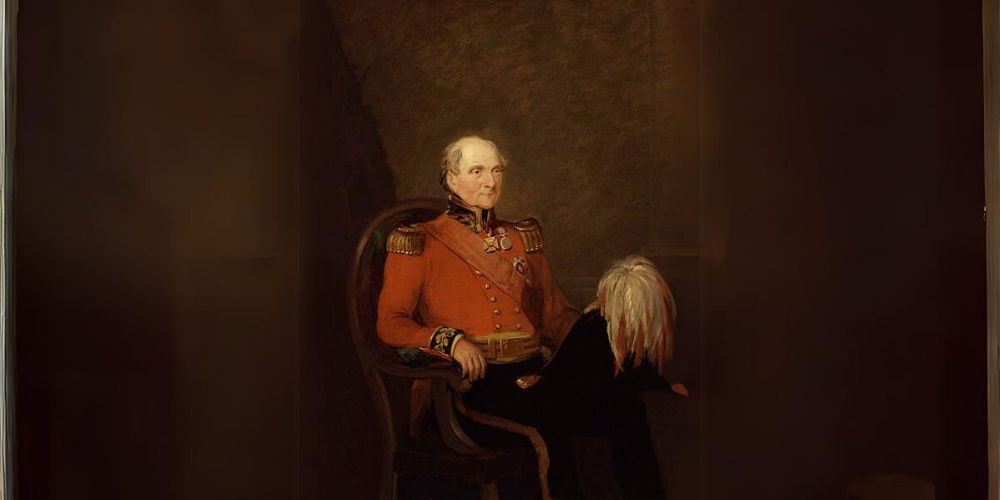
Another British war medal victory medal in the collection was dedicated to Viscount Hill and the Battle of Almaraz in 1812. He led his forces to destroy French fortifications covering a bridge of boats on the river Tagus at Almaraz in Spain. This broke the only line of communications for French armies at Soult and Marmont and was a key military victory during the Spanish Peninsular War. It took Hill and his forces a few minutes to break through the fortifications once they were in position and they spent the rest of the day dismantling the bridge and burning it.
Peace treaties of Paris (1814/15)
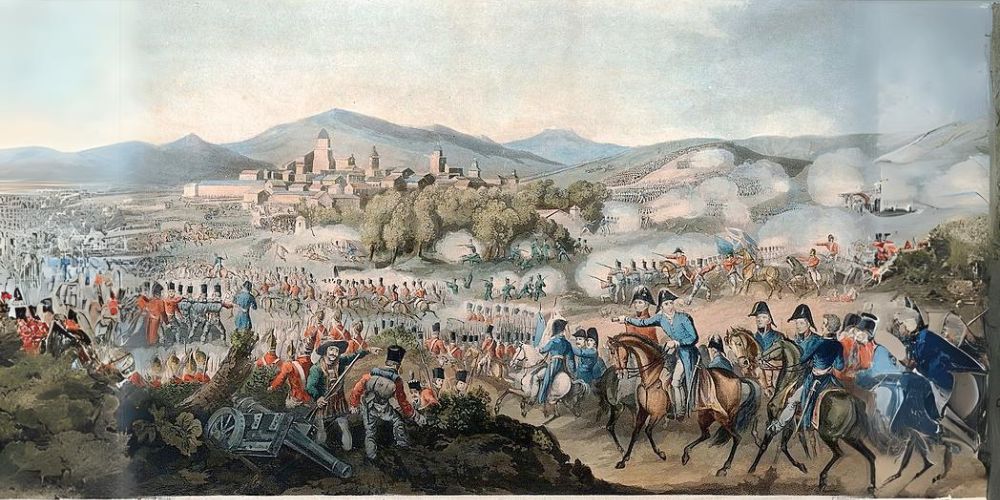
These notable events in the Napoleonic Wars sparked several victory medal and British war medal examples. These included a silver medal from James Mudie that depicted the head of Britannia wearing a crested helmet, symbolically decorated with a lion and an olive-wreath. The 1814 treaty ended the war between France and the allies (Britain, Austria, Portugal, Prussia, Russia and Sweden). It followed Napoleon Bonaparte’s abdication as France’s Emperor earlier that year and restored many of France’s former foreign colonies to its control. The second peace treaty signed in 1815 was agreed in far less lenient terms. It exacted harsh indemnities from France after Napoleon escaped from Elba and was welcomed back to French soil.
The Battle of Waterloo (1815)
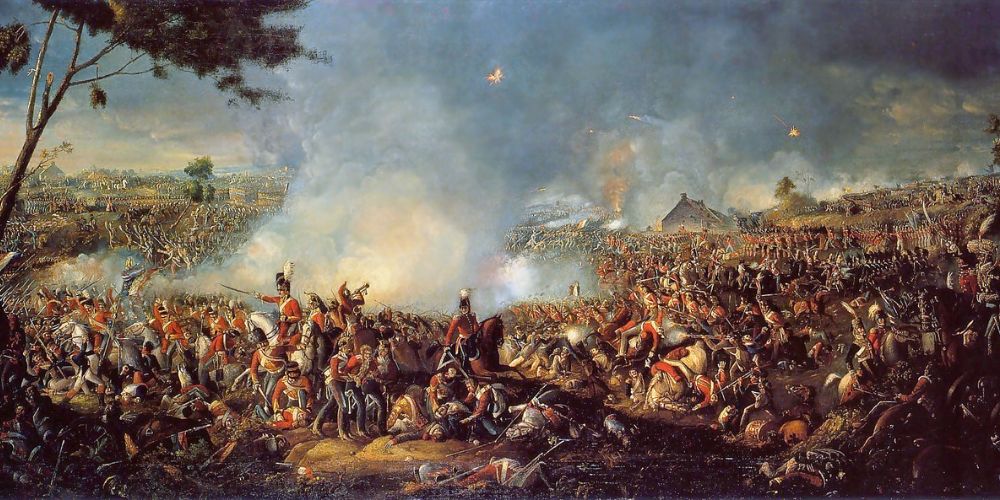
The Battle of Waterloo is undoubtedly the most famous battle from the Napoleonic Wars, inspiring all kinds of remembrances from London railway station names to Swedish pop songs. James Mudie’s medal collection included a tribute to this victory gained by Wellington over the beleaguered French troops in 1815. The clash was the most decisive of Wellington’s campaigns and Napoleon’s last battle. Napoleon abdicated as Emperor of France four days after suffering defeat and was exiled to the Island of St Helena in the Atlantic Ocean, where he died six years later.
Historic Medallions is delighted to have secured a complete collection of James Mudies medals, together with their original leather-bound presentation case that bears the crest of George III. Price available on application – this is a rare and exciting opportunity to own a significant piece of British military history.
Discover the Set: Mudie's National Series of Medals

